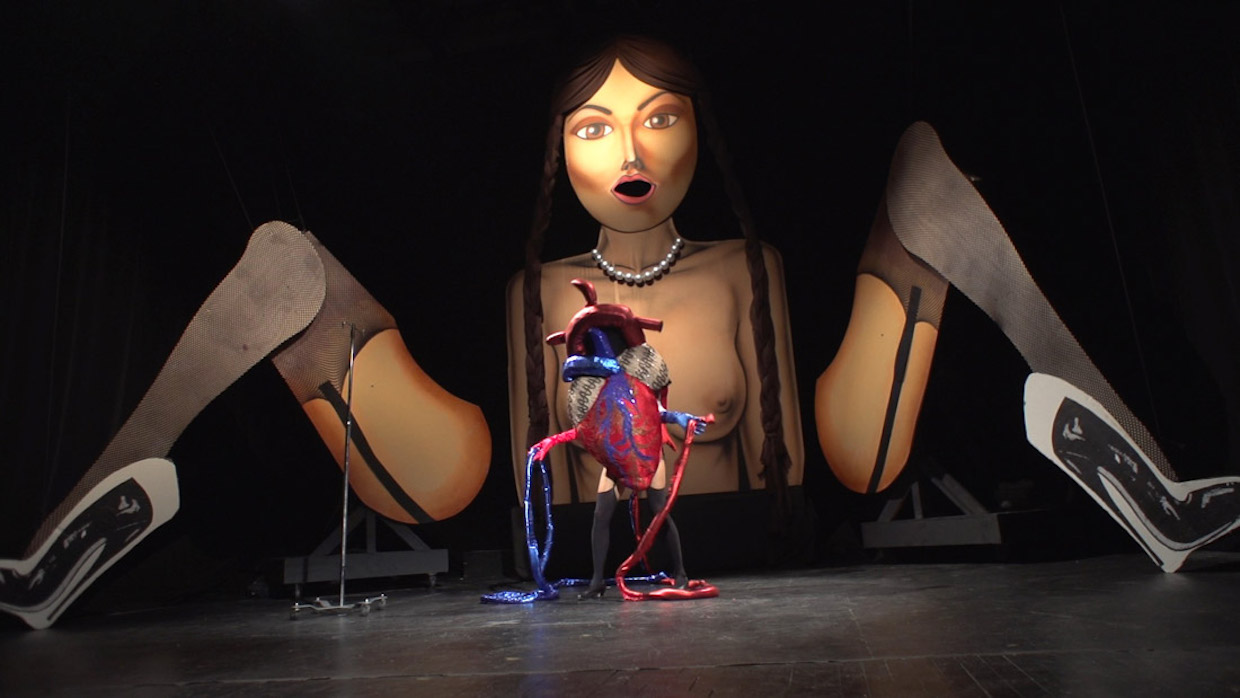 Back to selection
Back to selection
“I Am Very Sensitive to the Needs of the Performance Artist”: DP Ava Porter on Narcissister Organ Player
 Narcissister Organ Player
Narcissister Organ Player Multidisciplinary artist Ava Porter was one of four people to serve as a cinematographer on Narcissister Organ Player. The film, which premieres at the 2018 Sundance Film Festival, is the work of performance artist Narcissister, who has in recent years received profiles in the New York Times, Vice and Huffington Post for her provocative work. Below, Porter discusses her experience as one of the shooters on the genre-defying Narcissister Organ Player.
Filmmaker: How and why did you wind up being the cinematographer of your film? What were the factors and attributes that led to your being hired for this job?
Porter: Narcissister needed someone to shoot an underwater scene in La Jolla. Mutual friends put us in touch and we had a great first shoot together. After that, she hired me to shoot all of her West Coast scenes.
Filmmaker: What were your artistic goals on this film, and how did you realize them? How did you want your cinematography to enhance the film’s storytelling and treatment of its characters?
Porter: I have a background in interdisciplinary art and performance so, while today I mainly shoot, I am very sensitive to the needs of the performance artist in terms of documentation. The best take of a performance is determined by the quality of the performance, not by the cinematography. Filmmaking, in this sense, takes a back seat. My artistic priority on this film was to maintain the rawness, spontaneity, and tension of Narcissister’s work. When I filmed her, I was a documentarian, but also an active participant, following her cues, dancing with her, and immersing myself in the world she created.
Filmmaker: Were there any specific influences on your cinematography, whether they be other films, or visual art, of photography, or something else?
Porter: In general, I consistently look to the greats of direct cinema. I was also extremely fortunate to study with Babette Mangolte and Brian Cross when I was in graduate school. Specifically, for this film, I spent a lot of time looking at Narcissister’s body of work in order for her aesthetic to influence my cinematographic decisions.
Filmmaker: What camera did you shoot on? Why did you choose the camera that you did? What lenses did you use?
Porter: I shot with Canon C100, Canon 5D II and III, Nikon D800E, and GoPro, and Canon, Nikon, and Voigtlander lenses.
Filmmaker: Describe your approach to lighting.
Porter: We used entirely natural light for the West Coast scenes and so shot, for the most part, at sunrise or sunset, or on overcast days.
Filmmaker: What was the most difficult scene to realize and why? And how did you do it?
Porter: The most challenging scenes to realize were those that involved nudity in public spaces, particularly the underwater scene in the La Jolla Cove, and the “Changes” performance at La Jolla Shores Beach. But we worked quickly and weren’t approached by lifeguards or tourists until after we had finished filming. Ultimately, these tensions enhanced the work.
Filmmaker: Finally, describe the finishing of the film. How much of your look was “baked in” versus realized in the DI?
Porter: As none of what I shot was raw, much of the look was already baked in, but Taryn and Samuel Gursky at Irving Harvey did a stellar job enhancing as much as they could and creating cohesion among the work of the various cinematographers that shot for Narcissister Organ Player.
